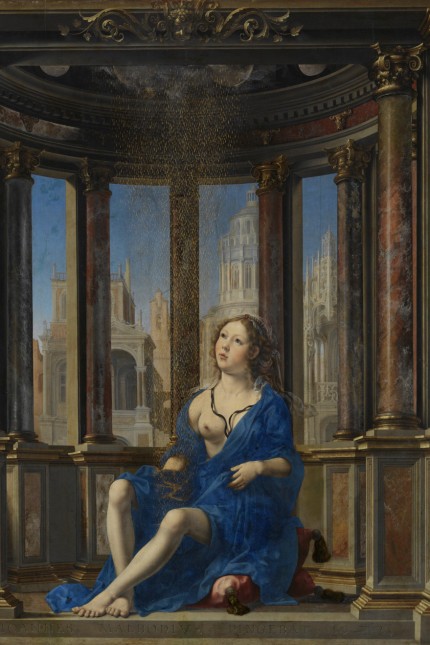When members of the Munich Philharmonic Orchestra Academy gave a chamber concert in the Alte Pinakothek a few weeks ago on the occasion of the “Venezia 500” exhibition, it was not only a nice encore as part of the accompanying program, but also a musically and visually very entertaining evening. The young musicians performed pieces by Vivaldi, Telemann and Bach, Schubert and Ravel with great enthusiasm.
In particular, Schubert’s late String Quintet in C major – given its opulent length, only the first movement was performed – was mastered by Yuriko Takemoto and Naoka Aoki on the violins (Aoki supported the students as the Philharmonic’s first concertmaster), Otoha Tabata on the viola, and Luca Giovannini on the cello and Daniel Kamien on the double bass with great verve and a lot of empathy.
Like putti, the children hang from the young woman’s neck in Francesco Salviati’s painting “Caritas” (1543/45), which hangs in the Alte Pinakothek in Munich.
(Photo: Bavarian State Painting Collections)
Although the concert did not take place in the middle of the Venezia exhibition, but in the well-cooled Hall V, there were Old Masters on display here too, although they formed more of a background. Directly behind the musicians is the Caritas depiction by Francesco Salviati, a young woman with three children – as handsome as putti – hanging around her neck. Next to her is a thoughtful Danae by Jan Gossaert, called Mabus, whose bright blue robe leaves her legs and one breast uncovered.

Only partially covered: the Danae by Jan Gossaert called Mabuse from 1527, can be seen in the Alte Pinakothek Munich.
(Photo: Bavarian State Painting Collections)
Completely naked, Lukas Cranach’s Lucretia, who committed suicide, flanked the event, as did the two allegorical female figures by Hans Baldung, called Grien – one with a music book, viol and cat, appropriate for the occasion, the other with a mirror, snake and deer. To the side, the two protagonists and other figures in Nicolas Poussin’s portrait of Midas and Bacchus, visibly drunk, lounged in a bucolic landscape. A scene that comes very close to a feast.
The three after-work evenings under the motto “Vino, Arte, Musica”, to which the Alte Pinakothek invites you on December 7th, January 11th and January 25th, are not a feast, but there are bacchanalian echoes. Then scholarship holders from “Yehudi Menuhin Live Music Now Munich” will make music directly in the Venezia exhibition. Ciceroni will also be on hand to explain the magnificent works in the exhibition, and Garibaldi will be serving Venetian wine in the foyer.
The changing concert in cooperation with the State Theater at Gärtnerplatz on January 19th under the title “Venice in the sound of the (ge) times”, in which the art of the Venetian Renaissance in relation to the music of different eras will be presented in a one-hour concert at four stations in the exhibition rooms is already sold out. But there are still tickets available for the second concert with members of the Munich Philharmonic Orchestra Academy on December 18th, again in Hall V and presumably in front of those mentioned above.
Vino, Arte Musica: Dec. 7, Jan. 11 and Jan. 25, 7 p.m.; Second concert of the Munich Philharmonic Orchestra Academy: December 18th, 7:30 p.m., Old Pinacoteca

